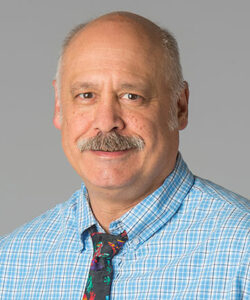North Spokane Corridor: Will it bridge or divide?
New freeway's connection to community scrutinized

Just as the Washington state Department of Transportation awaits the flow of transportation funding to resume construction on the North Spokane Corridor, new ideas are being floated for it, including tossing the freeway concept for the remaining portion of the project.
Following a recent U.S. Department of Transportation-led workshop here, one Hillyard business leader suggests examining the possibility of constructing a portion of the corridor as a modern surface street system, rather than a freeway.
Spokane was one of four communities that recently won an Every Place Counts Design Challenge Grant through the U.S. Department of Transportation.
Every Place Counts is intended to help reconnect communities that are geographically divided by freeways and to help ensure other communities aren’t disconnected similarly by projects underway.
The Spokane grant included a July workshop here in which community design experts with the federal agency shared ideas with and collected information from transportation and urban planners and community members.
Richard Burris, president of the Greater Hillyard Business Association, says the workshop cited locations in the U.S. in which freeways were removed and replaced with enhanced surface streets while still meeting community and transportation goals.
“They’ve made a complete departure from things 30 years past to what they have now,” Burris says of the approach.
Burris, who claims 30 years of experience in urban and transportation planning, says he wants to see if federal transportation planners think a surface street system with synchronized traffic signals would provide an improved transportation corridor while better connecting the northeast Spokane community.
Others caution, though, that major design changes now would conflict with funding commitments, timing, and goals of the corridor.
Louis Meuler, a city planner, says the workshop included case studies on how to help mitigate some of the issues the Hillyard neighborhood has raised.
“There were some examples and concepts on how to integrate a freeway better into the community,” he says.
He asserts, however, that it’s unlikely that a report expected from the federal agency in coming weeks will recommend wholesale changes to the NSC design.
“It’s still very much a state project, and the state Department of Transportation has its marching orders,” Meuler says.
The original scope of the NSC project was framed in a 1997 environmental impact statement, he says.
“It would take a great deal of effort to change that,” Meuler asserts.
So far, the state Department of Transportation has completed roughly half of the 10.5-mile North Spokane Corridor from the north junction with U.S. 2 at Wandermere south to the Freya Street/Francis Avenue vicinity at a cost of $615 million.
The Legislature last year approved $750 million in funding to complete the project, continuing from Freya/Francis south to a planned interchange at Interstate 90.
Following a lull in construction this year, major NSC construction is scheduled to resume next summer with the anticipated flow of new fuel tax receipts to pay for it.
The NSC project is expected to be completed in about 2030.
The next phase is complicated by a contaminated site in the path of the originally planned route, Burris asserts.
The 7-acre former fueling depot site, known as the Black Tank property, is contaminated with oil floating atop groundwater 170 feet below the surface of the property, which is just south of Wellesley Avenue, about a block east of Market Street, says Jeremy Schmidt, Washington state Department of Ecology’s site manager for the Black Tank property.
The Department of Ecology has identified current property owner BNSF Railway Co. and former fueling depot operator Marathon Oil, both of Texas, as parties responsible for paying for the cleanup.
Burris asserts, “The NSC can’t go farther until there’s a resolution over whether BNSF will expedite the cleanup timetable or grant relief for the Department of Transportation to proceed without liability. If they can’t resolve it, (the project) will have to go around it.”
Ecology’s cleanup timeline likely will exceed the NSC construction schedule.
Schmidt says the companies have a Sept. 9 deadline to submit a new cleanup plan.
“It will be a revision of a document submitted in 2015,” he says. “BNSF and Marathon Oil had to do some additional work to ensure it meets the intent of the law.”
The cleanup itself will take three to 20-plus years to complete, he says.
A potential rerouting option for the NSC alignment would shift the Wellesley Avenue overpass toward Market Street, about a half block west of the originally planned alignment, a WSDOT preliminary site plan shows.
Burris says the many members of the Hillyard business community worry the freeway will overshadow the district they’ve been working to enhance in recent years.
“What is a nonstarter and absolutely not acceptable is an elevated freeway down Market Street,” he says.
Al Gilson, Washington state Department of Transportation’s Eastern Region spokesman, says the surface-street concept would conflict with the goal of the NSC.
“The high-speed, limited-access highway is designed to move regional, national, and international commerce,” Gilson says. “A boulevard is not conducive to the process.”
The freeway concept is fully funded to completion, he says, adding that a surface street concept would require a “significant change in the design we have today.”
He says the department isn’t proposing to build a fully elevated freeway section to avoid the contaminated property, although it might have an additional overpass on the south end of the reroute.
“There was already going to be one over Wellesley,” Gilson says. “It would look more like the bridge over Francis.”
He says the department is refining designs, but it’s not prepared to go back to the drawing board.
“The project is still in the final design stages on all sections,” Gilson says. “It’s imperative that we move right along. We need to make decisions fairly quickly.”
Related Articles
Related Products


_c.webp?t=1763626051)
_web.webp?t=1764835652)

